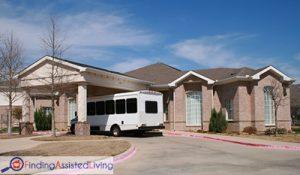 If you are searching for an assisted living facility or senior living community of any kind, it is important to understand the distinctions between different types of senior care facilities. One important division is between a nursing home and an assisted living facility.
If you are searching for an assisted living facility or senior living community of any kind, it is important to understand the distinctions between different types of senior care facilities. One important division is between a nursing home and an assisted living facility.
Before going into detail, you should remember an important fact about almost all retirement communities, retirement homes and senior care facilities of any type: they are all regulated by state agencies. Therefore, an organization that can call itself an assisted living facility in Florida may have to meet different standards in another state. Nursing homes are an exception in some cases, because they may be giving medical care to Medicare patients. This makes them subject to some federal regulation. In Florida, the regulation of nursing homes and assisted living facilities is in the hands of the Florida Department of Elder Affairs and its division called the Agency for Health Care Administration (AHCA).
The standards and requirements may vary from one state to another, but you can make some general assumptions. A nursing home is generally a facility where patients can get 24-hour-a-day medical care, but at a lower level than provided in a hospital. In Florida, AHCA defines nursing homes as,
“…residential facilities where a person lives or where a person can stay temporarily. A temporary stay may be for respite care or recuperation after being in a hospital.”
Nursing home services include such things as nursing care 24-hours a day, case management, and health monitoring, personal care, physical therapy and administration of medicines (including IV medication). Nursing homes will have a full- or part-time physician as medical director, and this doctor’s practice will often consist entirely of nursing home patients.
The term ‘temporary stay’ is important. Nursing homes are not generally intended to be long-term or permanent solutions. They are meant to provide temporary support for patients who do not need full hospital care, but who cannot do well using in-home care services or the in-home nursing care provided by home health agencies. Because they are involved in providing skilled medical care from physicians and other medical professionals, the expenses of nursing home care may be covered by medical insurance; this is not generally true for assisted living facilities and other senior care communities.
Physically, nursing homes tend to resemble a hospital-style arrangement with a central nursing station or nursing area that can closely monitor patients as they convalesce. Admission to a nursing home is usually controlled by a physician or medical staff which judges that the patient is well enough to leave the hospital but cannot be managed by a home health aide, in-home care services or in-home nursing care.
An assisted living facility differs from a nursing home in several important ways. First, assisted living facilities are like retirement communities and other senior living communities in that they are intended to be long-term or permanent arrangements. Many assisted living facilities have apartment-style rooms or suites, sometimes free standing and sometimes in a single building.
Although assisted living facilities may be licensed to provide some level of medical assistance, this does not include the complex procedures that nursing homes may provide. Generally, assisted living facilities are limited to providing help with medicine dosing and scheduling or with routine, low-level medical checks. On the other hand, assisted living facilities do include dependable, long-term aid with the activities of daily living, local transportation, and recreational opportunities.
Moving to an assisted living facility does not require the presence of a medical condition that needs nursing home or hospital-level care. Seniors who choose assisted living are residents, not patients. In fact, assisted living agreements often require a resident to move if the community is not able to provide needed care, such as skilled nursing or around-the clock supervision. However, many senior care organizations are adopting the ‘age in place’ principle, providing accommodations that include a wide range of senior care options. These senior living communities may include assisted living with no medical care, memory care units, skilled nursing (nursing home) care, all the way up to hospice care. This type of retirement community enables seniors to remain in one place as their care needs change.
The process of entering an assisted living community differs greatly from that of a nursing home. Patients enter nursing homes on medical advice and with medical consent. Residents move to retirement communities or assisted living facilities after deciding that this new environment better fits their needs. A nursing home is a medical decision, while an assisted living facility is a life-style choice that can be planned well in advance.
Still, preparing for and selecting the right assisted living facility or other senior living community can be a challenging task. You must decide what level of senior care is needed now and what will be available in the future. Which assisted living facility, retirement community or senior apartment community is best? What about the social, transportation, medical and nutritional care that you or your senior parent or spouse may require? Have there been any complaints against this senior care facility and how were they resolved?
Finding Assisted Living and FindingAssistedLiving.com’s business is to know these things. FAL is a source of trustworthy, knowledgeable and free advice on choosing the best local facility to meet your needs. If staying ‘home instead’ is the best option, Finding Assisted Living can connect you to the best available home care services, respite care or senior day care program. Please contact us at FindingAssistedLiving.com or call us at 866-333-2657.

